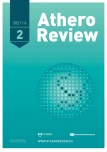Physical activity in treatment and prevention with a focus on risk factors for cardiovascular disease
Authors:
Martin Matoulek
Authors‘ workplace:
Obezitologické centrum – XXL, III. interní klinika – klinika endokrinologie a metabolismu 1. LF UK a VFN v Praze
Published in:
AtheroRev 2021; 6(2): 99-102
Category:
Reviews
Overview
In the Czech Republic, the number of overweight and obese people has increased in recent months as a result of the COVID- 19 pandemic; recent data show that in the adult population it is approximately 57%. It has been proven that obese patients suffer from hypertension 5 times more often and diabetes 6 times more often (in the vast majority this involves type 2 diabetes). Associated diseases, in particular cardiovascular disease and vascular stroke, may be favourably influenced by an exercise programme, i.e. a physical activity plan. However, if another influencing factor is present, such as the condition of the locomotor apparatus (back pain, arthrosis of the supporting joints, etc.), we find that the recommendation of movement may turn out quite complicated. Somewhat unfortunately, we need to resort to recommendations that, though being based on large clinical data, are often unattainable for the patient, i.e. they do not understand how to make them work for themselves. Therefore, physical activity requires sufficient motivation which may initially be very small, although patients are aware that physical activity is “important.” Then it is essential to evaluate the effect of our recommendation, and possibly its modification, if for some reason the expected goal has not been achieved.
Keywords:
cardiovascular disease – exercise programme – obesity – overweight – Physical activity
Sources
1. Matoulek M, Svačina, Lajka J. Výskyt obezity a jejích komplikací v České republice. Vnitr Lek 2010; 56(10): 1019–1027.
2. Thivel D, Roche J, Miguet M et al. Post-moderate-intensity exercise energy replacement does not reduce subsequent appetite and energy intake in adolescents with obesity. Br J Nutr 2020; 123(5): 592–600. Dostupné z DOI: .
3. Marios T, Smart NA, Dalton S. The Effect of Tele-Monitoring on Exercise Training Adherence, Functional Capacity, Quality of Life and Glycemic Control in Patients With Type II Diabetes. J Sports Sci Med; 2012; 11(1): 51–56.
4. Sedlock DA. Postexercise energy expenditure following upper body exercise. Res Q Exerc Sport 1991; 62(2): 213–216. Dostupné z DOI: .
5. Støren Ø, Helgerud J, Sæbø M et al. The Effect of Age on the V O2max Response to High-Intensity Interval Training. Med Sci Sports Exerc 2017; 49(1): 78–85. Dostupné z DOI: .
6. Brosse AL, Sheets ES, S Lett HS et al. Exercise and the treatment of clinical depression in adults: recent findings and future directions. Sports Med 2002; 32(12): 741–760. Dostupné z DOI: .
Labels
Angiology Diabetology Internal medicine Cardiology General practitioner for adultsArticle was published in
Athero Review

2021 Issue 2
Most read in this issue
- Physical activity in treatment and prevention with a focus on risk factors for cardiovascular disease
- Insulin resistance and its targeting in clinical practice
- SGLT2 inhibitors and atherosclerosis in a background of effect of gliflozins and heart failure
- The LDL number is alive!
